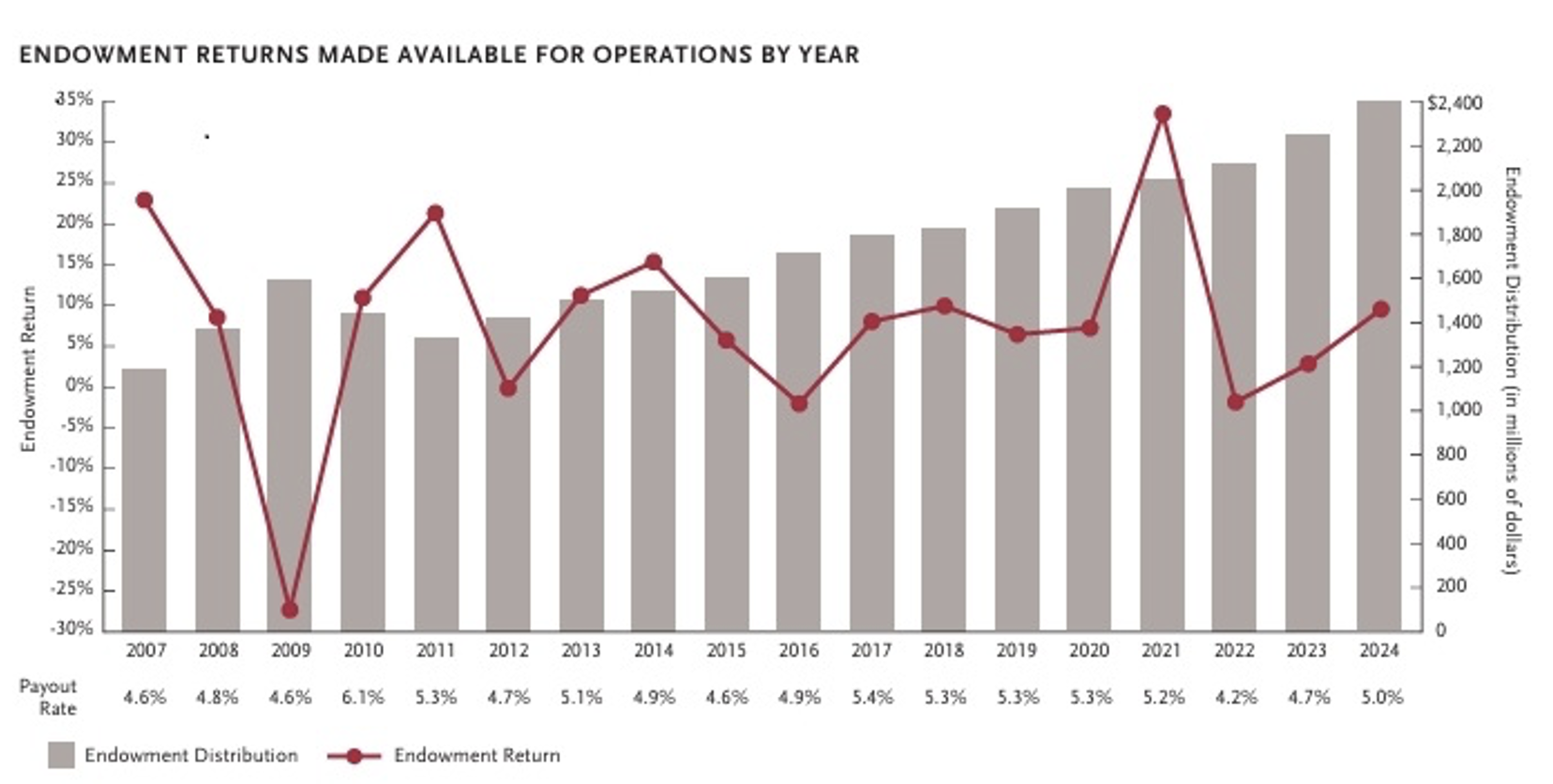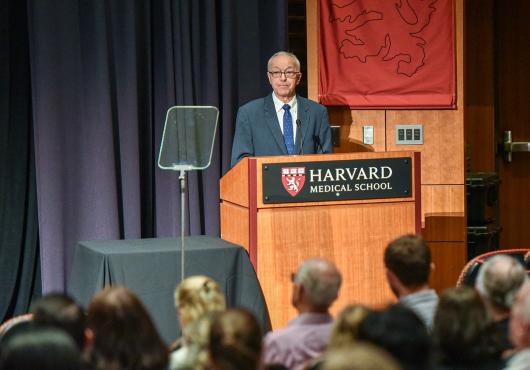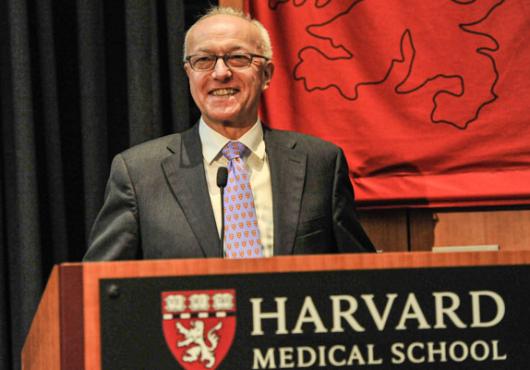
This interview was originally published in April 2024 and has been updated for 2025.
Ask anyone which university has the largest endowment in the world and most will guess correctly that the answer is Harvard. They also will likely have opinions on what Harvard could do with that money.
What people may not know is that there are restrictions on how much of these funds an institution can spend each year and what it can spend them on. Just ask Julie Joncas, chief financial officer at Harvard Medical School since 2022.
In a conversation with Harvard Medicine News, Joncas explained some misconceptions about Harvard University’s and HMS’ endowments, reasons behind the current financial strategy for drawing funds from the endowment, and what that means for the School’s research, education, and community goals.
Harvard Medicine News: What is the Harvard University endowment and how does it support Harvard Medical School?
Julie Joncas: The Harvard University endowment, which had a market value of just over $53 billion at the end of its last fiscal year in June 2024, is the sum of more than 14,000 endowment funds given to specific schools, often for specific purposes, since the University’s founding. That amount includes approximately 1,400 gifts, worth about $5.4 billion, that have been given specifically to HMS. These constitute the HMS endowment.
Most of the HMS endowment is designated for financial aid and professorships to support research and teaching.
About a third of the gifts to HMS have terms that require the money be used at one of our affiliated hospitals in a clinical setting or for a specific type of research that is done only at a hospital. In those cases, we act as stewards on behalf of our hospital affiliates.
Other gifts have unique terms such as supporting our library collections.
HMNews: What are the biggest misconceptions about the Harvard or HMS endowment?
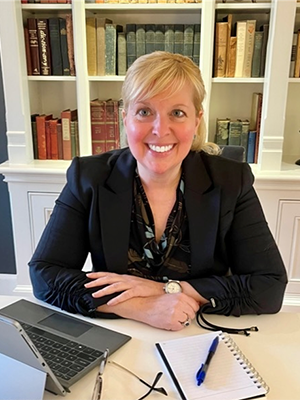
Joncas: I read an article recently where someone was walking around the Harvard College campus commenting on aging buildings, saying, ‘Well, Harvard has the money. If they wanted to, they could afford to upgrade these facilities.’ I had to smile because that is a classic example of the public’s perception that the endowment is a checking account that can be spent at our discretion. That is not true.
People contribute to an endowment specifically so the gift lasts in perpetuity and continues to support the University and the schools long past when any of us are still here. We never actually touch the original gift. Instead, we invest it and spend only a portion of the income that is generated.
Even then, donors are often very specific about the intent of their contributions, and they put restrictions on those gifts. About 80 percent of Harvard’s endowment funds, and about 90 percent of HMS’s endowment funds are subject to donor restrictions, which means we are only allowed to spend the income according to the terms of the gift. That makes it challenging to fund something completely new because there typically isn’t an unrestricted endowment that can pay for a new technology, piece of equipment, type of research, or building that isn’t already being used to fund costs elsewhere. It is hard for leadership to pivot quickly if they want to change their strategic course because any new project requires fundraising from scratch. This is why other sources of revenue are important and why we are so grateful to the donors who support new ideas and programs that allow us to remain on the forefront of research and education.
There are so many energetic faculty, staff, and students at HMS with endless talent and wonderful ideas, and we will never be able to support all of them through our endowment. We have to be thoughtful about how we spend our resources and be responsible about the pace of spending so we don’t overspend.
It’s important to keep in mind as well that endowment income is one part of the complete picture of University and HMS income. Endowment distributions cover just over 25 percent of the HMS’s annual operating expenses. The remaining three-quarters must come from other sources, including federal and non-federal research grants, education revenue, and gifts from alumni, parents, and friends.
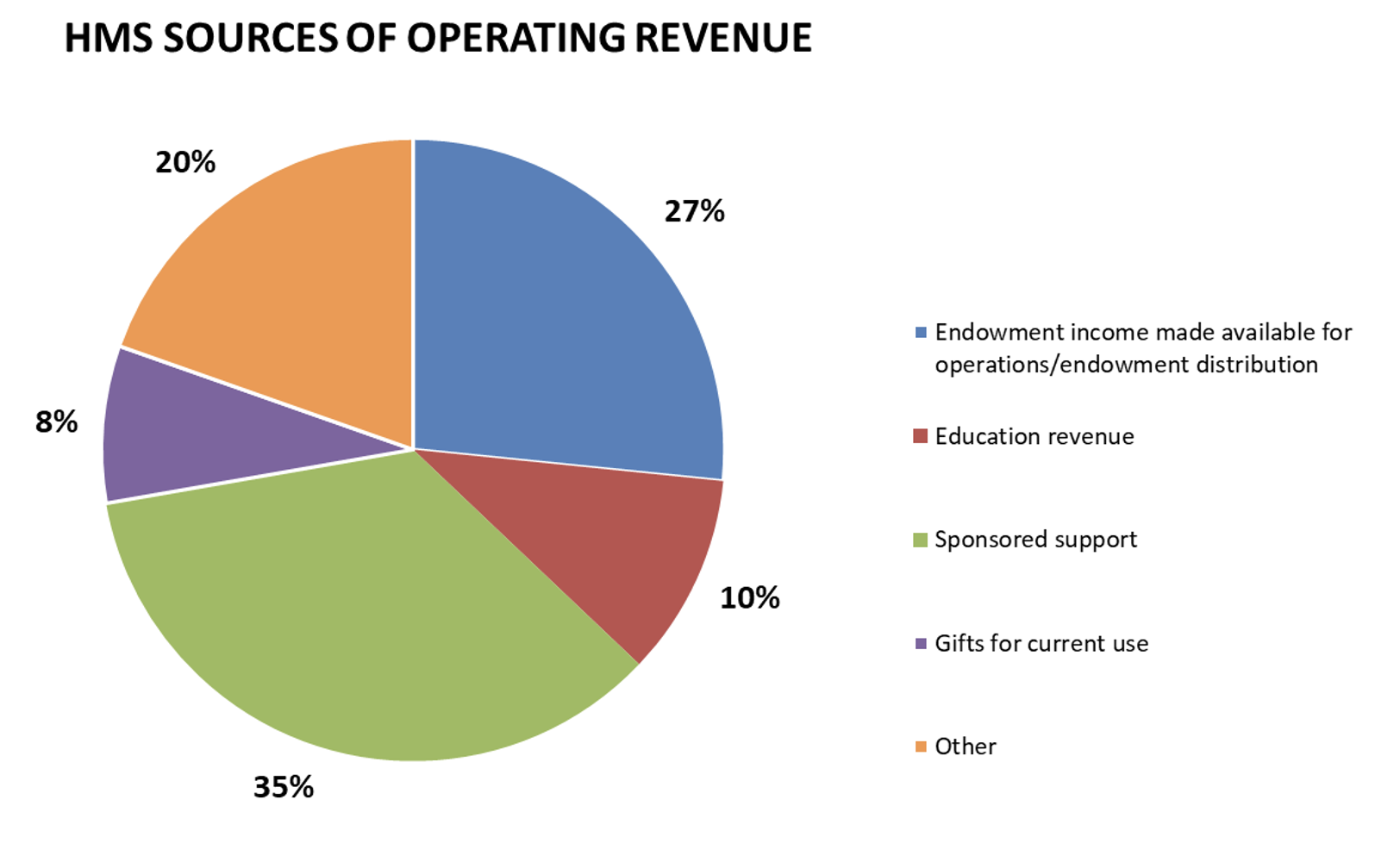
HMNews: How do you manage volatility in the endowment? Has it ever been an issue?
Joncas: We can learn from the recent history of Harvard endowment returns. In the early 2000s, there was an almost 20-year bull market where the overall endowment was generating more than 10 percent returns every single year. But what happens when you have an atypically long bull market like that is that people get complacent, and they forget that the reason market investments often generate higher returns is that there is high risk due to volatility. The University allowed department operating budgets to grow, expanded hiring, and started constructing new buildings.
Then a crash came in 2009. Overnight, the endowment lost almost 30 percent of its market value. Projections dropped for the income the endowment could generate. The annual costs the University had planned to pay — whether for personnel, building space, or other projects — were suddenly going to exceed its annual endowment income distribution.

